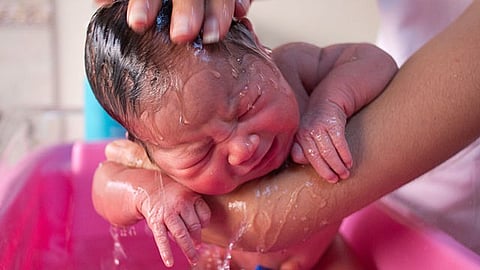

In December 2019, the joyous event of welcoming a newborn into the world turned into a nightmare for a Karnataka family, exposing a horrifying case of medical negligence at City Clinic Multispecialty Hospital in Hubballi. On December 14, 2019, a hospital attendant accidentally dipped the newborn into hot water while performing a normal sponge bath, resulting in severe burns.
The hospital initially misdiagnosed the burns as epidermolysis bullosa (EB), a rare and severe skin condition. However, the exact nature of the injuries was later uncovered at SDM College of Medical Sciences and Hospital, where the child was admitted for treatment. The injuries were diagnosed as thermal burns, contradicting the first misdiagnosis and shedding light on a grave error in the hospital's care.
Faced with the consequences of this medical incompetence, the family initiated a legal battle to seek justice for the harm done to their newborn. On February 15, 2024, the Dharwad district consumer disputes redressal commission issued a landmark verdict ordering City Clinic Multispecialty Hospital, along with doctors Dr. Ajit S Joshi, Dr. Prakash Madalgeri, and Dr. Vidya A Joshi, to pay a Rs 10 lakh compensation to the victim's family. Additionally, United India Insurance Co Ltd was ordered to pay an additional Rs 7.5 lakh to the aggrieved family.
The commission denounced the hospital's actions as a classic example of medical negligence, highlighting that the hospital authorities had tried to cover up the situation by wrongly implying that the child had EB. The family had suffered mental trauma since their newborn did not receive enough care between December 10 and 14, 2019.
Vinay, the infant's father, stated in his complaint that the newborn had no skin concerns prior to the occurrence, and that any allegation of a rare and incurable disease such as EB was false. The commission agreed, underlining that the hospital's attempt to classify it as EB had not only humiliated the kid but also caused the parents significant mental, physical, and financial distress.
The legal processes revealed the magnitude of the hospital's misconduct, as stated by the commission: "It is a classic example of medical negligence by an attendant. Despite such visible neglect and blunders, being in charge of the treatment and administration, the hospital must have consoled the complaint and his wife, who are the parents of the victim child, by providing suitable treatment to the burn injuries."
Reflecting on the aftermath of this horrific tragedy, the child, now four years old, has overcome challenges and is healthy, with no evidence of EB or other skin disorders. This demonstrates the resiliency of the human spirit and highlights the significance of appropriate diagnosis and treatment in healthcare.
The case also prompts a broader discussion of healthcare and accountability. The incident not only shakes public trust in medical institutions, but it also emphasizes the importance of working together to create a safer and more reliable healthcare system. It serves as a sad reminder to healthcare providers globally to examine their protocols, training, and systems, ensuring that preventable tragedies do not overshadow the happy moments of bringing new life into the world.
(Input from various resources)
(Rehash/Susmita Bhandary/MSM)
